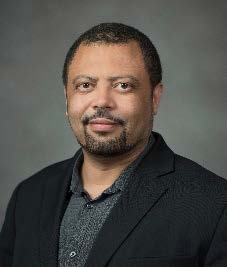
Motivated by the need to manage a complex and evolving intelligent transportation system in a collaborative framework, we describe five components of multi-agent modeling paradigm with several implementation examples from the VT-SCORES research lab at Virginia Tech. The research components discussed range from driver behavior, car-following models, adaptive control, and connected vehicles applications. We will show examples of extracting driver behavior from large datasets, modeling evolving system behavior with intelligent agents, integration of state estimation and communication frameworks in a connected vehicles environment, and the ramifications of neglecting learning in modeling. The presented agent-based framework is intermodal, and can incorporate performance characteristics and needs of different users (cars, trucks, busses, pedestrians, and bikes). The presentation will also touch on the latest innovations at the VT-SCORES lab and how it can help address evolving and complex transportation problems.
Dr. Monty Abbas is a Professor in the Transportation Infrastructure and Systems Engineering at Virginia Tech. He holds a PhD in Civil Engineering from Purdue University (2001). Dr. Abbas developed and implemented several algorithms and systems in his areas of interest, including the Platoon Identification and Accommodation system (PIA), the Pattern Identification Logic for Offset Tuning (PILOT 05), the Supervisory Control Intelligent Adaptive Module (SCIAM), the Cabinetin-the-loop (CabITL) simulation platform, the Intelligent Multi Objective Control Algorithms (I-MOCA), the Traffic Responsive Iterative Urban-Control Model for Pattern-matching and Hypercube Optimal Parameters Setup (TRIUMPH OPS), the Multi Attribute Decision-making Optimizer for Next-generation Network-upgrade and Assessment (MADONNA), the Safety and Mobility Agent-based Reinforcement-learning Traffic Simulation Add-on Module (SMART SAM), and the Broad Area-wide and Distance-wise Agent-based Signal-optimization System (BADASS). He was also one of the key developers of the dilemma zone protection Detection Control System (D-CS) that was selected as one of the seven top
research innovations and findings in the state of Texas for the year 2002. He is a recipient of the Dean’s Award for Excellence in Service, ICAT Creativity and Innovation Day Process Award for the Traffic SONATA project, Best Paper Award, Western Decision Sciences Institute (WDSI) 2018 Conference, Oak Ridge National Lab Associated niversities (ORAU) Ralf E. Powe Junior Faculty Enhancement Award and the G. V. Loganathan Faculty Achievement Award for Excellence in Civil Engineering Education. He is also a recipient of the TTI/Trinity New Researcher Award for his significant contributions to the field of Intelligent Transportation Systems and Traffic Operations.

Logistic systems, often face big challenges when making operational decisions, mainly due to existence of unpredictable and uncontrollable variables. Obviously, the complexities are more pronounced as problems scale up, often with exponential rates. Large and various datatypes generated from different resources means more variables to calibrate and tune and more models to validate. It demands use and development of state-of-the-art optimization models and machine learning tools, that are robust but also adoptable and transferrable from one application to another. In this presentation, an overview of different distributed mathematical models will be presented, it will be followed by the use cases of these approaches in different transportation problems. Finally, we will discuss how transportation experts, can benefit from the cloud computing and the advantages that it can offer through a practical example.
Dr. Mahdieh Allahviranloo is an associate professor of civil engineering, at the City College of New York (CCNYCUNY). She is also a Visiting Academic at Amazon, working with the Amazon Last Mile Science team, and is currently spending her sabbatical from the university. After getting her civil engineering degree in Iran, she got her PhD in transportation engineering at the University of California, Irvine. In her academic research, she integrates data mining, statistical analysis, and optimization models to study how individuals move in urban areas. During her sabbatical at Amazon, she uses her academic training to solve a wide range of problems in the last mile logistic domain.

Abstract: Crowdsourced parcel delivery, or crowdshipping, has emerged recently as a crucial component of city logistics and an attractive alternative to conventional van/truck-based delivery. By employing ordinary people (termed crowdsourcees) who use spare time to perform pickup and delivery by walking, biking, or driving personal cars as opposed to using company-owned vans or trucks, crowdshipping helps reduce shipping cost and freight traffic-related congestion, parking demand, energy use, and emissions, all of which contribute to more sustainable urban communities. In this talk, I will present my group’s recent research in heuristics-embedded and constrained deep reinforcement learning (DRL) to tackle the key problem of crowdsourcee-shipping request assignment in a dynamic on-demand crowdshipping environment. By comparing the proposed approach with conventional heuristic methods, benchmarking the results against global optimality, and testing result sensitivity to demand pattern variations, we demonstrate superior performance of the approach in solution quality, computational efficiency, and robustness, and thus potential for practical implementation.
Prof. Bo Zou is an associate professor in the Department of Civil, Materials, and Environmental Engineering at the University of Illinois Chicago. He is currently also a visiting associate professor in the Department of Civil and Environmental Engineering at the University of California, Berkeley. Prof. Zou’s recent research interest has been on technology innovations that are happening and reshaping human and freight mobility. His research has received funding support from the World Bank, NSF, NASA, DOT, DOE, the American Public Transportation Association, and state and city government agencies. Prof. Zou serves a number of roles in the transportation research community, including as an associate editor of Transportation Letters, an editorial board member of Transportation Research Part B/C/E, and the editorial board lead of TRB Freight Transportation Planning and Logistics (AT015) Committee. Prof. Zou received Ph.D. in transportation engineering from UC Berkeley, M.S. in transportation planning and management from Tsinghua University, Diplôme d’Ingénieur from Ecole Centrale Nantes, and B.E. in civil engineering from Tsinghua University.

This presentation will present an overview on human factors modelling in traffic flow. Three different
studies will be discussed related to human factors and transportation management strategies. The first will explain
how the introduction of stochasticity into a car-following model can replicate stop-and-go wave phenomenon, and
how automated and connected vehicles can mitigate this phenomenon through the elimination of human error and
the use of connectivity. The second study will explore the impact of compliance rates on the design of variable
speed limit control to prevent capacity drops at sag and tunnel bottlenecks. Finally, an overview of the i4driving
European project will be presented. This ambitious project with multiple countries involved aims to deliver a new
library of credible models of heterogeneous human driver behaviors. This new library will be a combination of
models bringing the heterogeneity and complexity of the road traffic system into simulation by accounting for
human factors.
Irene Martínez is an Assistant Professor and Co-director of the hEAT lab at the Department of Transport & Planning
within the Civil Engineering and Geosciences faculty at TU Delft. She obtained her Ph.D. in Civil and Environmental
Engineering from the University of California, Irvine, with a dissertation entitled: "Modeling and Management of
Emerging Mobility Systems: New Approaches Based on Vehicle and Trip Flow Dynamics in Absolute and Relative
Spaces". She has a background in Civil Engineering with double MSc degrees from the University of California, Irvine
(2019) and Universitat Politècnica de Catalunya (2017). Irene is a member of the TRB Traffic Flow Theory and
Characteristics Committee. She has received several awards during her studies. Her research interest is traffic flow
theory and control in the era of autonomous, connected, and shared mobility. She has worked on the design of
multiple management strategies, such as Variable Speed Limits, High-Occupancy-Toll lanes, and fleet sizing of shared
mobility systems. Her research goals are to design the next generation of transportation management strategies to
guarantee sustainable and equitable transportation systems.

Abstract: This seminar presents an examination of the inter-relationship between household vehicle ownership and ridehailing use frequency. Both variables constitute important mobility choices with significant implications for the future of transport. While it is generally known that these two behavioral choices are inversely related to one another, the direction of causality is rather ambiguous. Do vehicle ownership levels affect ridehailing use frequency, or does the adoption and use of ridehailing services affect vehicle ownership? If ridehailing services affect vehicle ownership, then it is plausible that a future of mobility-as-a-service would be characterized by lower levels of vehicle ownership. To explore the degree to which these causal relationships are prevalent in the population, a joint latent segmentation model system is formulated and estimated on a 3500-respondent survey data set collected in four automobile-oriented metropolitan areas of the United States. Model estimation results show that 58 percent of the survey sample follow the causal structure in which ridehailing use frequency affects vehicle ownership. This finding suggests that there is considerable structural heterogeneity in the population with respect to causal structures, and that ridehailing use does indeed hold considerable promise to effect changes in private vehicle ownership in the future.
Dr. Ram Pendyala is a professor of transportation systems and the Director of the School of Sustainable Engineering and the Built Environment at Arizona State University. He also serves as the Director of TOMNET, a USDOT-funded Tier 1 University Transportation Center. His expertise lies in the study of activity-travel behavior and understanding the role of various factors in shaping human mobility choices. He has published extensively and held leadership positions in the Transportation Research Board Technical Activities Division, including service as Chair of the Traveler Behavior and Values Committee, Travel Analysis Methods Section, and Planning and Environment Group He has his PhD and MS degrees from the University of California at Davis, and his B.Tech. in Civil Engineering from the Indian Institute of Technology-Madras.
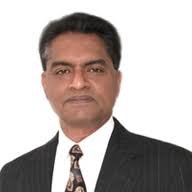
Traffic signal control has been done, for well over a century, with red and green signals and intersection
queuing, so as to avoid collisions among vehicles in crossing-conflict movements. Signal cycles of more than a
minute of typical length were required due to startup and clearance lost times, even when queuing delays in the
absence of lost times would essentially be (linearly) less with lower cycle lengths. Can new technologies help us
design signal control that does not force vehicles to stop but lets them go through conflicting streams without
accidents? In fact, should we even start with the presumption that crossing movements involve more safety risks
than car-following? Preliminary analysis with time-space conflict regions show that human drivers face significant
accident risks in no-conflict car-following but are able to avoid it all the time. Can we then imagine signal control
that allows designed and timed movement across conflicting streams, perhaps with technology assistance, thus
essentially removing stopping and signal cycling at nodes? In such a scenario, the control can be in the form of
timed flashing greens on approach links rather than at nodes. Dramatically more efficient traffic control designs now
become possible and are being developed at UCI. With the help of simulated results, this talk will raise the
possibilities of a new paradigm in traffic control that is link-based and not at the network nodes.
Dr. R. Jayakrishnan has been in the faculty of Civil and Environmental Engineering at the University of California at
Irvine since 1991, after receiving his BTech from the Indian Institute of Technology, Madras in 1985 and his
doctorate from the University of Texas at Austin. His research interests are in a variety of topics such as Traffic Flow
Theory and Simulation, Transportation Systems Analysis, Network Modelling, Decision Theory, Intelligent
Transportation Systems and Public Transit Design. He has been in the editorial committees of journals such as the
ASCE Journal of Transportation Engineering and Transportation Research Part-C and has served in several
professional committees and academic panels of the Federal Highway Administration, National Science Foundation,
and the Transportation Research Board. 25 PhD students have graduated under his advice, with nearly half of them
in faculty positions around the world. He has about 150 refereed publications to his credit and he is currently the
Director of the interdisciplinary Transportation Science Program at UC Irvine
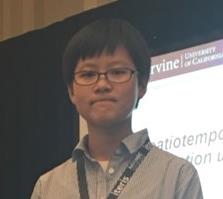
California’s multiple major freight gateway and logistics facilities serve both the nation. But the economic, environmental, and local community impacts of trucks remain poorly measured. This seminar demonstrates the design and pilot implementation of the real-time, scalable, and cost-efficient FML2 by integration of advanced traffic sensing technologies. FML2 provides truck characterizations across multiple attributes and is deployed at more than 30 loop detection sites. We will first share the design of FML2 from edge computing, model development, communication architecture, and backend data storage to the web-based data dashboard to visualize the real-time detection and classification results, and then the development of a roadside LiDAR-based truck classification framework using a representation learning algorithm. Finally, we introduce a self-learning framework through the integration of inductive loops and LiDAR sensors to further enhance the robustness and resilience of the FML2.
Dr. Yiqiao Li is an Assistant Project Scientist at the Institute of Transportation Studies at UC Irvine (ITS-Irvine). She received a Ph.D. in civil and environmental engineering, focusing on transportation system engineering, from UC Irvine. Her research is focused on the development of traffic surveillance systems using advanced sensing technologies with an emphasis on truck activity monitoring, and the application of statistical and machine learning models to obtain critical traffic information. Dr. Li has presented and published her works at conferences and in journals such as IEEE Intelligent Transportation Systems, Transportation Research Record, and Transportation Research Part C: Emerging Technologies. One of her papers was selected as the best paper submitted to Travel Time, Speed, and Reliability Subcommittee at the 98th Transportation Research Board Annual Meeting.
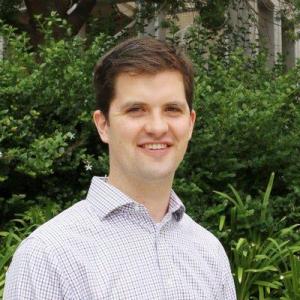
Ride-hailing services emerged nearly a decade ago and have steadily grown in both market share and impact on transportation systems and cities. In this event, we will see the power of networks in modeling these shared mobility services across two studies. The first study develops metrics, based on a novel network-based quadratic program, to characterize the shareability potential of cities at a fundamental mode-agnostic level. These metrics provide valuable insights into the sharing potential of an entire network, of specific network links and corridors, and of a particular node. The second study uses a simple, yet powerful, minimum cost network flow model on a time expanded network to determine fleet sizes for automated mobility-on-demand services. We will compare the proposed modeling approach with the state-of-the-art deterministic fleet sizing model, and view the proposed approach’s computational advantages (i.e., the problem size is independent of ride-hail trip count) and practical advantages.
Michael Hyland is an Assistant Professor at the UCI in the Civil and Environmental Engineering department and an affiliate of the Institute of Transportation Studies at UC Irvine (ITS-Irvine). His research centers on modeling and analysis to support the planning, design, management, and operations of multi-modal transportation systems, with focus on emerging transportation innovations and their impacts on transportation systems. Dr. Hyland is a member of the Transportation Research Board’s Network Modeling Committee and of the Early Career Editorial Advisory Board for Transportation Research Part C: Emerging Technologies, is a two-time recipient of the Dwight David Eisenhower Transportation Fellowship and was named one of the Top 20 Future Leaders in Transportation by the Eno Center for Transportation.
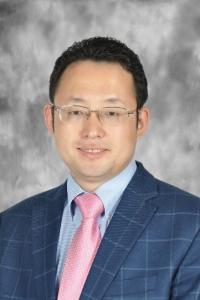
Automated vehicle (AV) following control impacts traffic safety, mobility and stability. Our empirical study showed that commercial AV following control became more unstable as the headway was set to a smaller value, implying a possible intrinsic trade-off between safety, mobility and stability aspects in AV following control design. We further analytically explained the underlying vehicle control mechanism that dictates this trade-off. We investigated a parsimonious linear AV following model that captures the first-order parameters on the safety, mobility and stability aspects. The string stability results indicate that the minimum headway considering safety buffer alone may be hardly achieved due to stability concerns, and practical AV control needs to either allow a longer headway to trade for string-stable traffic or conversely accommodate moderate string-instability to trade for a smaller AV following headway. These findings are verified by field experiments with production vehicles. Vehicles of different powertrains (e.g., electric vehicles vs. internal combustion engines) are compared. Methods of improving vehicle performance are explored. This work also provides a possible explanation of observed string instability of commercial AV following control (e.g., adaptive cruise control) and provides thoughts on improving existing technology and transportation systems.

There are many innovations in freight transportation, some technical and directly transportation related, others more organizational in the broader logistics context. Research, if aimed and directed well, can have a significant impact on the implementation and success of these innovations. I address the following questions:
– How can freight transportation R&D be better connected to innovations in the sector?
– What are the main innovations in logistics, and what research is needed?
– What gaps in current research can we observe?
The presentation will propose some solution directions, using work of established researchers worldwide and experiences from an R&D community in Europe, to illustrate how this can work In daily practice. In the discussion, I hope to gather further experiences from the US and compare it to Europe, to sharpen our thinking on this problem.









